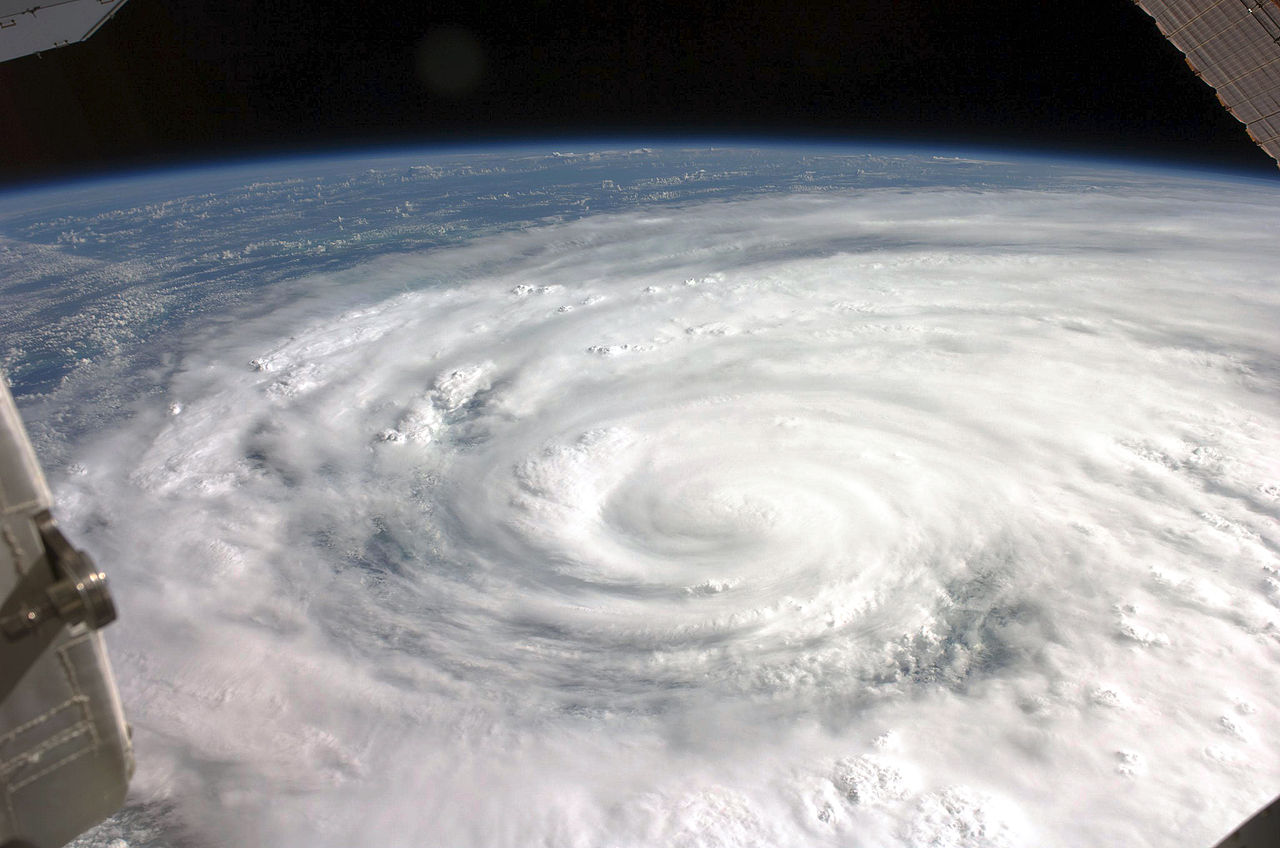Storms form early in Gulf of Mexico, gain speed and power closer to land
Image: Wikimedia Commons
September may be the peak month for hurricanes, but don’t let the calendar fool you – some surprisingly strong storms have formed in June, says a researcher and professor at Texas A&M University at Galveston.
William Merrell, holder of the George Mitchell ’40 Chair in Marine Sciences and former head of the Texas Center for Beaches and Shores, who has more than 35 years of marine experience, says that gulf-formed hurricanes can strike quickly and they tend to catch people totally off-guard. He notes that over the past 150 years, most of the upper Texas coast has received numerous strikes from gulf-formed hurricanes.
“This is in sharp contrast to Louisiana and the lower coast of Texas, where significantly less than one-half of storms making landfall form in the Gulf,” Merrell explains.
“Gulf-formed storms have three nasty characteristics besides forming close to us: they form early in the season, their forward speed often accelerates as they make landfall and, most troublesome of all, they often intensify as they make landfall.”
Gulf-originated storms generally occur earlier in the hurricane season than Atlantic hurricanes, Merrell adds, noting that June is the busiest month on record for Gulf-originated storms making landfall in Texas while Atlantic hurricanes peak in September.
Such storms often catch people off guard, he adds.
“It’s a strange part of human nature, but in June, at the beginning of the season, we are not yet conditioned to hurricane dangers even though we know from past experience the true dangers of hurricane season,” he says.
“Our minds allow us to forget past hurricanes when the weather is clear and no storms are forecast. Even though we know better, we are often unprepared when hurricane season starts. Add to that the fact that with Gulf-formed storms, we don’t have the ‘benefit’ of watching an Atlantic hurricane slowly approach us causing destruction in its path and building concern among weather forecasters. We are caught by surprise, time and time again, when storms form early in the season.”
Merrell says the upper Texas coast has experienced major hurricanes that made landfall within 72 hours after reaching hurricane status in the Gulf of Mexico. The most noteworthy one was Hurricane Humberto that formed in September 2007 with almost no warning and actually achieved hurricane status while over land on the Bolivar Peninsula.
Two other gulf-formed hurricanes were Audrey in 1957 and an unnamed 1932 storm that hit near Galveston.
“Hurricane Audrey was a very fast-moving gulf hurricane that made landfall on the coast near the Texas-Louisiana border in June of 1957,” Merrell points out.
“Audrey was a Category 1 or 2 as it initially moved through the Gulf, and then suddenly gained intensity to a Category 4 hurricane about 125 miles off the coast. Six hours later Audrey made landfall as a Category 4 hurricane, causing catastrophic damages in eastern Texas and western Louisiana. Between 416 and 550 people died, making Audrey the sixth deadliest hurricane in the history of the United States.”
And although not a hurricane, tropical storm Allison formed on June 5, 2001 and pounded the Houston area for several days, resulting in 22 deaths and causing $5 billion in damages as it produced more than 30 inches of rain in several locations.
The 1932 Gulf hurricane that hit near Galveston formed off the Yucatan about 2 ½ days before it hit, Merrell says, adding that on Aug. 13 around midnight, the 1932 storm reached the status of a category 1 hurricane about 240 miles off the coast.
“The hurricane rapidly gained intensity, becoming a Category 2 six hours later and a major hurricane (Category 3) six hours after that when it was about 100 miles off the coast,” he notes. “The 1932 storm finally made landfall as a Category 4 hurricane the evening of Aug. 14, killing about 40 people and causing extensive damage to Freeport, Angleton and Galveston.
“So the message is very clear: Texans should not take the early part of the hurricane season lightly and, when storms form just outside our back door, pay careful attention because these types of storms can be deadly.”
#TAMUresearch


